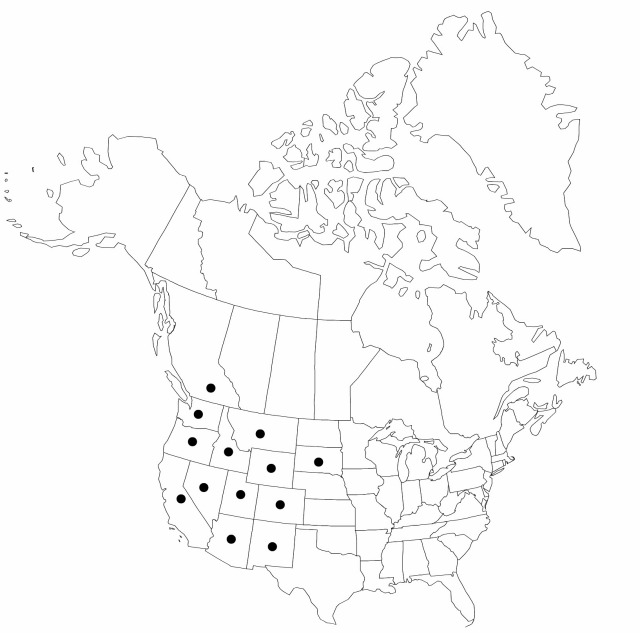Carex vallicola
Amer. J. Sci. Arts, ser. 2, 32: 40. 1861.
Plants without conspicuous rhizomes. Culms 12–60 cm, 1–1.3 mm wide basally, 0.5–1 mm wide distally. Leaves: sheaths tight, green, fronts hyaline; ligules less than 2 mm, wider than long; widest leaf-blades 1–3 mm wide, papillose adaxially. Inflorescences with 5–10 crowded spikes, 0.5–3 cm × 5–8 mm; proximal bracts to 1 (–3) cm; spikes with 2–10 ascending perigynia. Pistillate scales hyaline or pale-brown with green 1–3-veined center, ovate, 2.8–3.2 × 1.8–2.6 mm, body slightly shorter than to length of perigynium, apex acute to short-awned. Anthers 1.8–2.3 mm. Perigynia brown, abaxial face 7–15-veined proximally, otherwise veinless or obscurely veined, 3.3–4 × 1.8–2.3 mm, base of perigynium spongy, thickened and longitudinally striate adaxially, spongy region 0.7–1 mm, margins serrulate to subentire distally; beak 0.5–1 mm, apical teeth 0.1–0.3 mm. Stigmas straight or slightly twisted, 0.05 mm wide. Achenes ovate to circular, 1.6–2.7 × 1.5–2 mm.
Phenology: Fruiting spring–early summer.
Habitat: Dry to mesic hillsides, grasslands, thickets, open forests
Elevation: 500–3000 m
Distribution

B.C., Ariz., Calif., Colo., Idaho, Mont., Nev., N.Mex., Oreg., S.Dak., Utah, Wash., Wyo., Mexico (Hidalgo)
Discussion
Selected References
None.
Lower Taxa
"shortened" is not a number."widest" is not a number.
